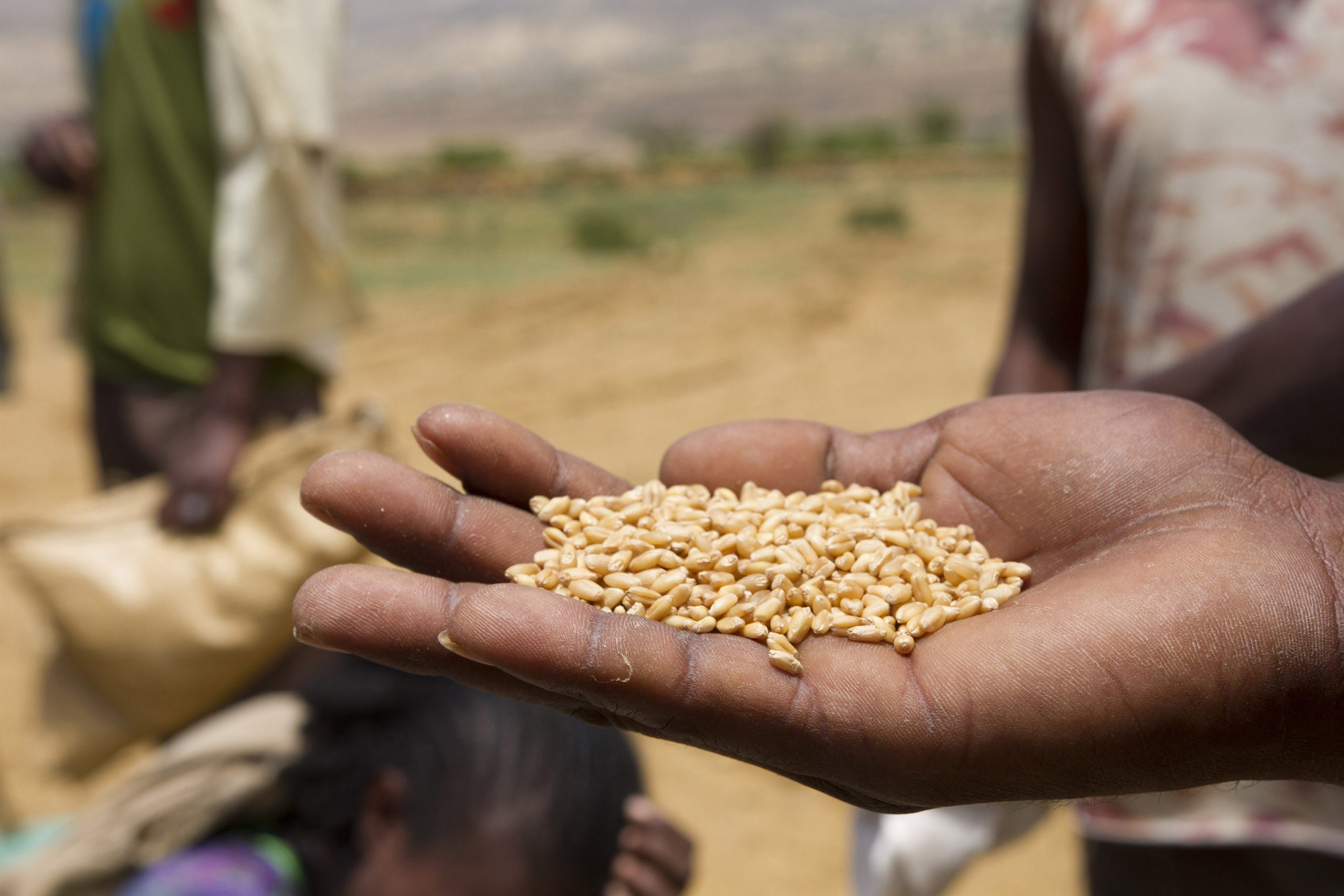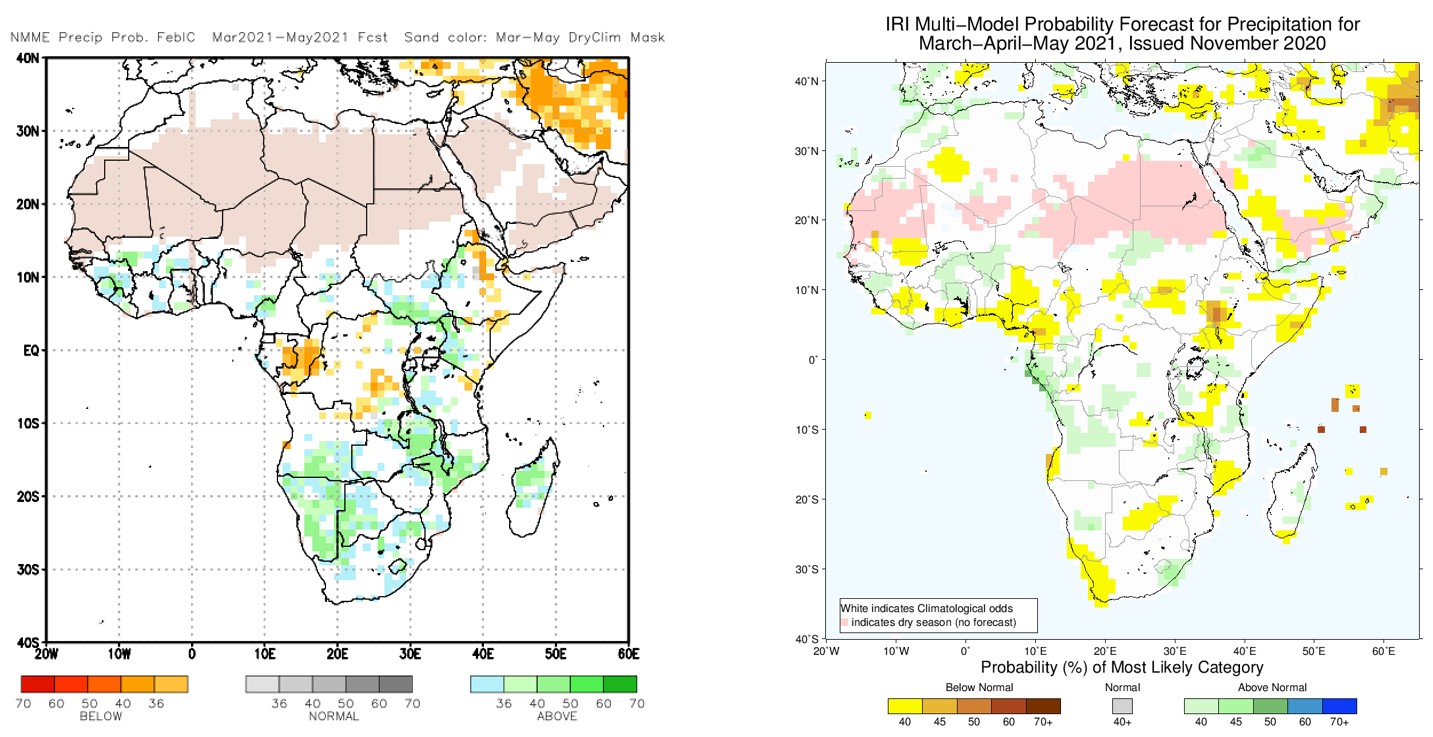Centre Service:
Predictive AnalyticsTags:
Summary:
May 2021 — If a humanitarian crisis could be prevented or mitigated by acting ahead of the shock causing it, what signals would be needed to understand when anticipatory action should be taken? The Centre’s Predictive Analytics team developed such a trigger to respond to projected drought-related food insecurity in Ethiopia. We undertook a historical analysis of food insecurity in the country, analysed weather forecasts, and defined thresholds that would predict a severe crisis.
To do this, we worked with colleagues from the Ethiopia field office as well as from the UN’s Central Emergency Response Fund (CERF) and OCHA’s Humanitarian Financing Strategy and Analysis Unit to translate operational realities into a trigger mechanism that allowed for enough lead time to implement activities ahead of the shock. By late 2020, 12.9 million people were projected to experience crisis- or emergency-levels of food insecurity within six months (by June 2021), partly due to an expected poor March-May rainy season.
A total of $20 million was released by the CERF in two stages, in December 2020 and February 2021, to aid agencies in Ethiopia. The funds were used to provide cash and farming inputs, rehabilitate water schemes, and provide water in schools, among other interventions, in Afar, Oromia, Somali, and the Southern Nations, Nationalities, and Peoples’ (SNNP) regions.

Challenge:
Ethiopia is highly vulnerable to severe seasonal droughts, having experienced them every decade since 1953. The 1983-1985 drought caused up to an estimated million famine-related deaths. The droughts of 2002, 2011 and 2015-2016 caused fewer deaths but left millions of Ethiopians without enough food. Droughts not only cause food and nutrition insecurity, they also limit access to water for people and animals, increase the burden of waterborne diseases, and can lead to displacement, school dropouts and other negative coping mechanisms. Climate change has increased the frequency and severity of droughts in Ethiopia, and their impact has worsened over the years.
Anticipatory action is an innovative approach to humanitarian response. The actions are taken to prevent or mitigate potential impacts of a shock before they are felt by communities, and based on predictions of how the event will unfold. An Anticipatory Action Plan includes three pre-agreed components: financing, implementation activities, and a robust trigger mechanism based on available forecasts or models. The actions are time critical and require a clear signal of a projected shock-induced crisis. Developing such a predictive signal based on often incomplete data is challenging. It is equally challenging to create a signal threshold that captures out of the ordinary crises, while not missing or over predicting a shock.
Centre action:
The Centre’s Predictive Analytics team provided the technical support to develop such a signal. The trigger mechanism was designed to verify two criteria: the projected deterioration of the food security situation and the presence of a drought.
As a first step, we performed a historical evaluation of food security in the country as reported by two well-established sources, FewsNet and Global IPC. The 12-year analysis mapped food insecurity severity and geographical spread by looking at the percentage of the population having experienced food insecurity per region.
Based on this analysis and discussions with the rollout team (OCHA and partner organizations engaged in anticipatory action in Ethiopia) and scientific partners at Global IPC, we designed a criterion that would alert to either early-stage, widespread food insecurity or to localised but more severe food insecurity (‘Crisis’ and ‘Emergency’ levels in the Integrated Food Security Phase Classification).
As a second step, we needed to show that the food insecurity was related to drought. To counter bias and noise, we recommended that below average rainfall should be predicted with 50% probability by at least two sources. The sources included local and global seasonal precipitation forecast models from ICPAC, NMA, NMME, IRI, and CHC. The criterion could also be met if food security outlooks by FewsNet or Global IPC mentioned the role of dry conditions as a driver of increasing food insecurity.
This approach — searching for a signal in multiple forecasts and including assessment of the causal relationship between climate forecasts and food insecurity — was endorsed by the rollout team and included as the trigger mechanism in the Anticipatory Action Plan for Ethiopia.
Outcome:
By late November 2020, four regions in Ethiopia met the food insecurity criterion (Afar, Oromia, Somali, and SNNP) with an estimated 12.9 million people projected to be affected by the end of June 2021.1 Food security outlooks mentioned dry conditions as drivers of the projected food insecurity. The trigger was therefore met.

However, seasonal weather forecasts for the March-May rainy season disagreed on the most likely scenario: some predicted a below-average season while others did not. Due to this uncertainty and given that two sources did not agree, the activation of the anticipatory action plan was split into two parts.

The first tranche of $13 million was released immediately in December 2020, and the second tranche of $7 million would only be released if the rainy season was still projected to be poor. This solution mitigated the risk of the rainy season turning out normal or wetter than normal and the risk of not acting if a poor rainy season were to occur. Ultimately, CERF released the second tranche of funding in February 2021 when the likelihood of below average rains was confirmed.
With the initial funds, the following activities were implemented by in-country partners (FAO, UNICEF, WHO and UNFPA): animal health treatment, farming inputs and cash, cash distribution for school fees, promotion of nutrition practices, rehabilitation of water schemes, distribution of non-food items such as blankets and containers for water, and hygiene promotion. The second tranche of funds were used for water provision in schools, strengthening rapid response teams, acute malnutrition screening, child protection, and the distribution of dignity kits.
Conclusion:
Our experience working with partners in Ethiopia highlights the critical role of bridging the technical and operational components of an Anticipatory Action Plan. We were able to use our technical expertise to design the trigger mechanism and also to help stakeholders navigate the uncertainty of forecasts. This bolstered overall confidence in the process, informed the geographic targeting of activities, and led to the use of a split activation.
In early 2021, the Red Cross Red Crescent Climate Centre undertook an evaluation of the trigger mechanism for Ethiopia. They found that the Centre’s communication and engagement with the wide range of stakeholders included in the process was positive and the overall trigger development timeline met the tight operational requirements. The report also highlights the need for greater automation of trigger monitoring and recommends iterative discussions and improvements with implementing partners to streamline anticipatory actions in Ethiopia. These lessons will be applied to the other locations (such as Nepal, Malawi and Burkina Faso) where the Centre is supporting OCHA’s work on anticipatory action. We will share the Climate Centre’s report here once it is released publicly.
